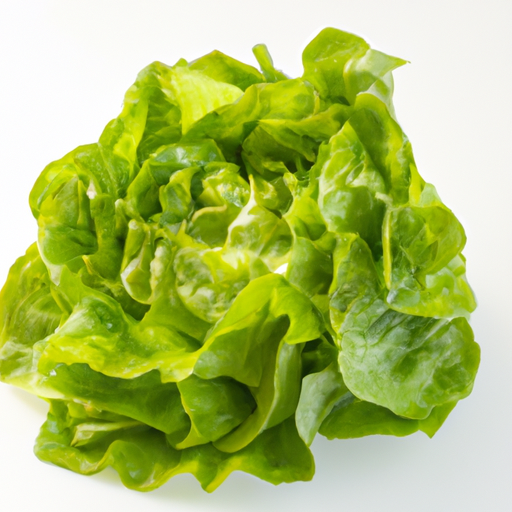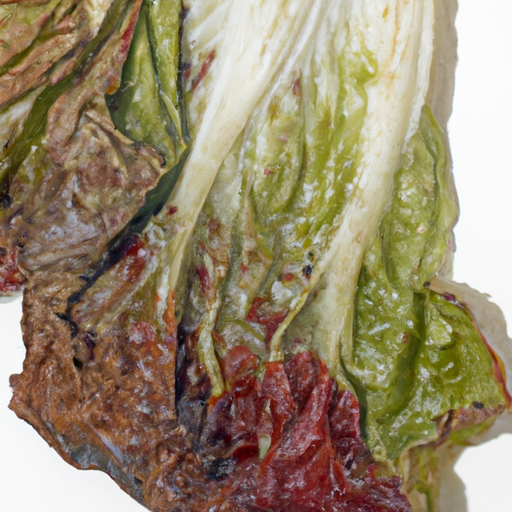Can I Eat Expired Lettuce?
Safe to eat up to 2 days after expiry
Expert Source
"According to the CDC, lettuce should be stored at 40°F or below and used within 1-2 days of purchase to reduce the risk of foodborne illness."
✅Fresh Lettuce

⚠️Spoiled Lettuce

Storage Guidelines
Storage Location
Fridge
Ideal Temperature
4°C (40°F)
Best Storage Method
Store in breathable bag with paper towel
Shelf Life
Average Shelf Life
7 days
Signs of Spoilage
Slimy texture, brown edges, strong smell
Additional Information
Alternative Uses
Use in soups or smoothies if wilting
Possible Substitutions
Spinach, kale
Frequently Asked Questions
What's the difference between expiration and best quality dates?
▼
The expiration date on lettuce typically refers to the point at which it may start to spoil or become unsafe to eat due to bacterial contamination. On the other hand, the best quality of lettuce is when it is at its peak freshness, taste, and crispness. While lettuce may still be safe to consume after the expiration date if properly stored, its quality may deteriorate, with wilting and loss of flavor. It is best to consume lettuce before the expiration date for the best taste and texture.
How can I tell if Lettuce has gone bad?
▼
To check if lettuce has gone bad, look for wilted, slimy, or discolored leaves. Smell the lettuce for any off-putting odors, indicating spoilage. Lastly, gently touch the leaves to feel for a slimy or mushy texture, which can also signal that the lettuce is no longer fresh.
What are the food safety risks?
▼
Lettuce, like many leafy greens, can be a common source of foodborne illness if not handled and stored properly. The main risk comes from contamination with bacteria such as E. coli, Salmonella, or Listeria. To minimize these risks, it is important to wash lettuce thoroughly before consumption, especially if it will be eaten raw. Avoid cross-contamination by keeping lettuce away from raw meat, poultry, or seafood. Additionally, make sure to refrigerate lettuce promptly and at the correct temperature to slow bacterial growth.
What are some pro storage tips?
▼
To maximize the shelf life of lettuce, it is best to store it in the refrigerator in a perforated plastic bag or airtight container to maintain humidity while allowing airflow. Avoid washing lettuce before storing it, as excess moisture can cause it to spoil faster. If you notice any wilted or slimy leaves, remove them before storing to prevent the spread of spoilage. For a crispier texture, you can revive wilted lettuce by soaking it in ice water for a few minutes before consuming. Additionally, storing lettuce away from ethylene-producing fruits like apples and bananas can help prolong its freshness.
Any interesting facts about Lettuce?
▼
Lettuce has been cultivated for over 4500 years and has a rich history in various cultures. It is believed to have originated in ancient Egypt and was considered a sacred plant. In ancient Greece, lettuce was associated with the god of fertility, and in ancient Rome, it was a symbol of prosperity and love. Lettuce is widely used in salads, sandwiches, wraps, and even cooked dishes in cuisines around the world. There are different types of lettuce, including iceberg, romaine, and leaf lettuce, each with its own unique flavor and texture.
Can I store Lettuce next to raw meat in the fridge?
▼
It's not recommended to store Lettuce next to raw meat in the fridge to prevent cross-contamination. Raw meat can contain harmful bacteria that may transfer to the Lettuce, increasing the risk of foodborne illness. Keep Lettuce in a separate compartment or drawer away from raw meat.
How long after opening a bag of Lettuce can I safely consume it?
▼
Once you open a bag of Lettuce, it's best to consume it within 2-3 days for optimal freshness and safety. After this period, the Lettuce may start to wilt or show signs of spoilage. If you notice any unusual odors, sliminess, or discoloration, it's safer to discard it.
Does the type of container affect Lettuce shelf life?
▼
The type of container can impact the shelf life of Lettuce. Opt for breathable containers or perforated bags that allow some airflow to prevent moisture buildup, which can lead to quicker spoilage. Avoid storing Lettuce in airtight containers as it can cause wilting.
How does cooking Lettuce affect its expiration?
▼
Cooking Lettuce can alter its texture and flavor but doesn't necessarily extend its shelf life. Once Lettuce is cooked, it should be consumed promptly or refrigerated within 2 hours to prevent bacterial growth. Cooked Lettuce typically lasts in the fridge for 2-3 days.
Do different brands of Lettuce have different shelf lives?
▼
While different brands may have varying packaging and storage methods, the shelf life of Lettuce is primarily determined by its freshness at the time of purchase. Follow the expiration date on the package and store the Lettuce properly in the fridge to maximize its shelf life.
How can I safely transport Lettuce for a 4-hour road trip?
▼
When transporting Lettuce for a road trip, pack it in a cooler with ice packs to maintain a cool temperature and prevent wilting. Avoid leaving Lettuce in a hot car for extended periods as it can lead to rapid spoilage. Upon reaching your destination, promptly refrigerate the Lettuce.
Does Lettuce last longer in winter or summer?
▼
Lettuce tends to last longer in cooler temperatures, such as winter, compared to hot summer months. High temperatures can accelerate wilting and spoilage of Lettuce. To extend the shelf life of Lettuce in summer, store it in the coolest part of the fridge and consume it promptly.
What happens if Lettuce is left at room temperature for 6 hours?
▼
If Lettuce has been left at room temperature for 6 hours, it's best to discard it to avoid the risk of foodborne illness. Bacteria can multiply rapidly at room temperature, leading to potential contamination. To ensure food safety, always store Lettuce in the fridge when not in use.
Expiration Calculator
Sources
For more information on food safety and expiration guidelines, visit our Sources page.
Scan your food directly and get instant safety info using our AI-powered camera feature.
Recipes Available
We have recipes that can help you safely use lettuce past its expiration date!
View Recipes →Similar Storage Requirements
Cooked Angel Hair Pasta
Grains & Pasta
View expiration date and storage guide →
Parsley
Herbs and Fresh Produce
View expiration date and storage guide →
Lamb Chops All Cuts Including Shoulder Loin Rib Fresh Raw
Meat & Poultry
View expiration date and storage guide →
Basil Fresh
Herbs and Fresh Produce
View expiration date and storage guide →
Cooked Egg Yolks
Dairy Products
View expiration date and storage guide →
Bel Paese Cheese
Dairy Products
View expiration date and storage guide →
Halibut Fresh Raw
Seafood
View expiration date and storage guide →
Duck Whole Fresh Raw
Meat & Poultry
View expiration date and storage guide →
Blue Cheese Wedge
Dairy Products
View expiration date and storage guide →
Reviewed By: Food Safety & Expiration Experts
At Can I Eat Expired, we are committed to providing accurate, science-backed information about food expiration and storage safety. Our content is carefully reviewed based on guidelines from leading food safety organizations, including:
- ✅U.S. Food & Drug Administration (FDA) – Food Safety Guidelines
- ✅United States Department of Agriculture (USDA) – Food Storage & Expiration Dates
- ✅World Health Organization (WHO) – Foodborne Diseases & Safety
- ✅Centers for Disease Control & Prevention (CDC) – Preventing Foodborne Illness
🔍 How We Ensure Accuracy
- We use official food safety sources to guide our recommendations.
- Our team continuously reviews and updates content based on the latest research.
- We encourage users to always check for signs of spoilage and follow proper storage guidelines.
📚 Have Questions?
If you have specific concerns about food expiration or safety, we recommend consulting a registered dietitian, food scientist, or your local health department.
Note: These are general guidelines. Always use your best judgment and when in doubt, throw it out.